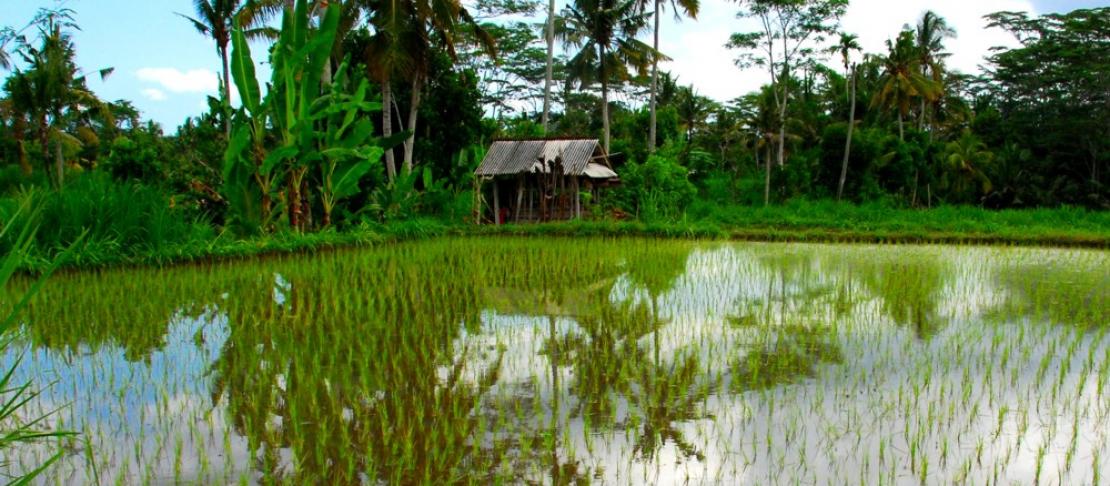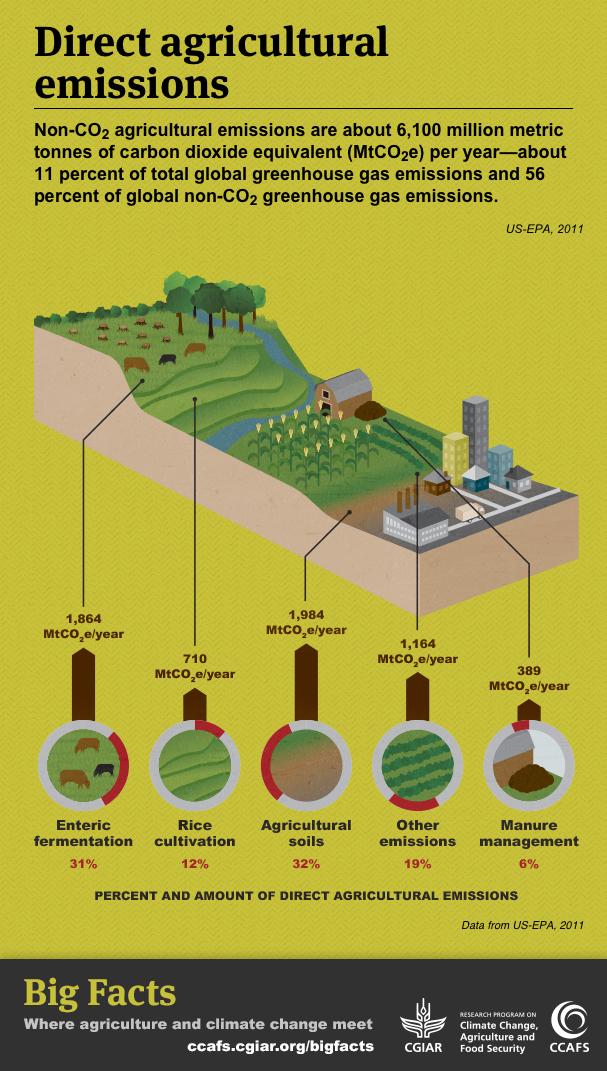Reducing agriculture emissions while maintaining yields - can it be done?

While much of the public attention to climate change focuses on carbon dioxide it is two other greenhouse gases, nitrous oxide and methane that comprise the largest part of agriculture’s contribution to climate change.
Nitrous oxide is released when nitrogen from fertilizers or organic material is transformed by microbial processes in soil and it is nearly 300 times as potent as carbon dioxide in terms of its global warming potential. Methane is released when organic material decomposes under anaerobic conditions, for example in a flooded fields and is 25 times as potent as carbon dioxide. 
Research to reduce emissions of nitrous oxide and methane from agriculture has examined how fertilizer and manure applications, soil moisture, and tillage affect the production and release of these greenhouse gases.
So far, however, most research has examined these management practices separately. In practice, it is the interaction between fertilization, water management, and tillage that determines emissions.
In an article recently published in Nutrient Cycling in Agroecosystems, researchers compared GHG fluxes from five management regimes for winter wheat-summer maize cultivation in the plains of Northern China.
Agriculture is a major contributor to greenhouse gas emissions in China, where excessive use of nitrogen fertilizers is common. The researchers found that two management regimes had high potential for reducing greenhouse gas emissions while maintaining yields:
(1) Reduced nitrogen fertilization combined with reduced irrigation and deep tillage;
(2) Controlled release fertilizer with reduced irrigation and no tillage.
By examining agricultural practices in combination, the researchers were able to recommend ways to reduce these emissions in the Northern China plains without sacrificing crop yields.
The lead author of the article, Yuefeng Shi, is a Ph.D. student at China Agricultural University and a member of the Climate, Food and Farming Network (CLIFF).
Read more: CLIFF Grants available to support scientific training of PhD students from developing countries
CLIFF is an initiative supported by the CGIAR Research Program on Climate Change, Agriculture and Food Security (CCAFS) that provides networking opportunities and small grants for doctoral students working on climate change mitigation and adaptation in small-scale farming systems.
Shi was part of the first group of CLIFF students, and used his funding from CLIFF to expand his research to examine how controlled release fertilizers and nitrification inhibitors can lower nitrous oxide emissions from soil.
“CLIFF provided the opportunity for Ph.D. candidates from different countries to share their knowledge,” Shi said. Because of CLIFF, “I have been able to network with experts on GHG mitigation and the impact of climate change.”
Yuefeng’s CLIFF cohort also included students conducting research in Kenya, Indonesia, Brazil, India, Zimbabwe, and Tanzania.
Salome Muriuki, a student at Kenyatta University in Nairobi, is quantifying the mitigation potential from the adoption of biogas made from animal manure and examining the benefits of biogas for smallholder households in Kiambu, Kenya. She used her funding through the CLIFF network to purchase a biogas analyzer for measuring methane and nitrous oxide.
It was the interaction opportunities she gained through CLIFF, however, that she valued the most:
“I liked being a scholar in Africa, yet experiencing a global touch through networking and interacting with scientists across the globe, and getting to learn from their research. And, importantly, the recognition that my individual work is appreciated at the global scale!”
Ngonidzashe Chirinda, the coordinator of the CLIFF networks who is based at Aarhus University in Denmark, is confident that the network is fulfilling its mission, which he says is “building capacity to shape the future.”
Written by Meryl RIchards Science Officer for Theme 3 Low Emissions Development.
